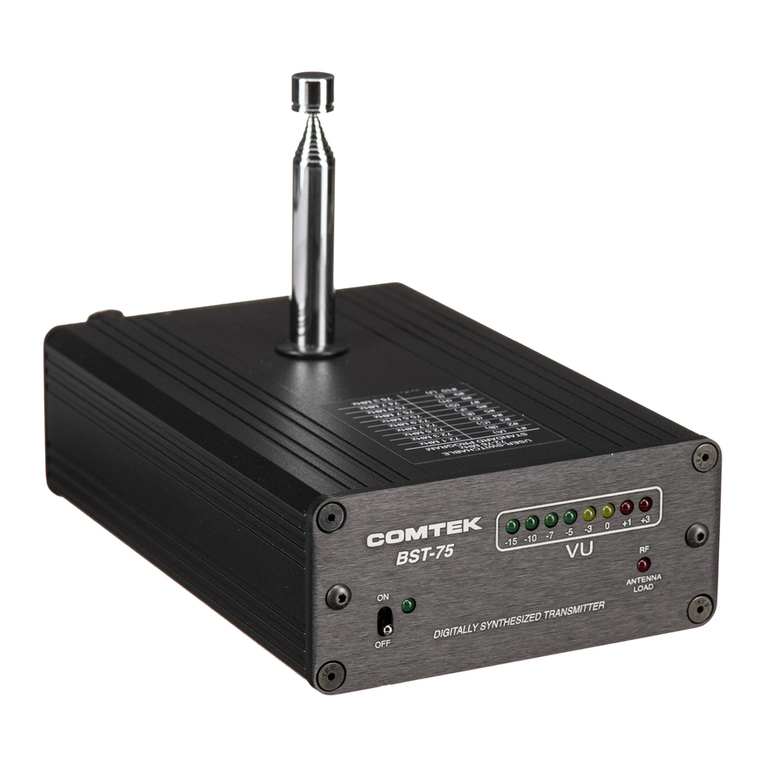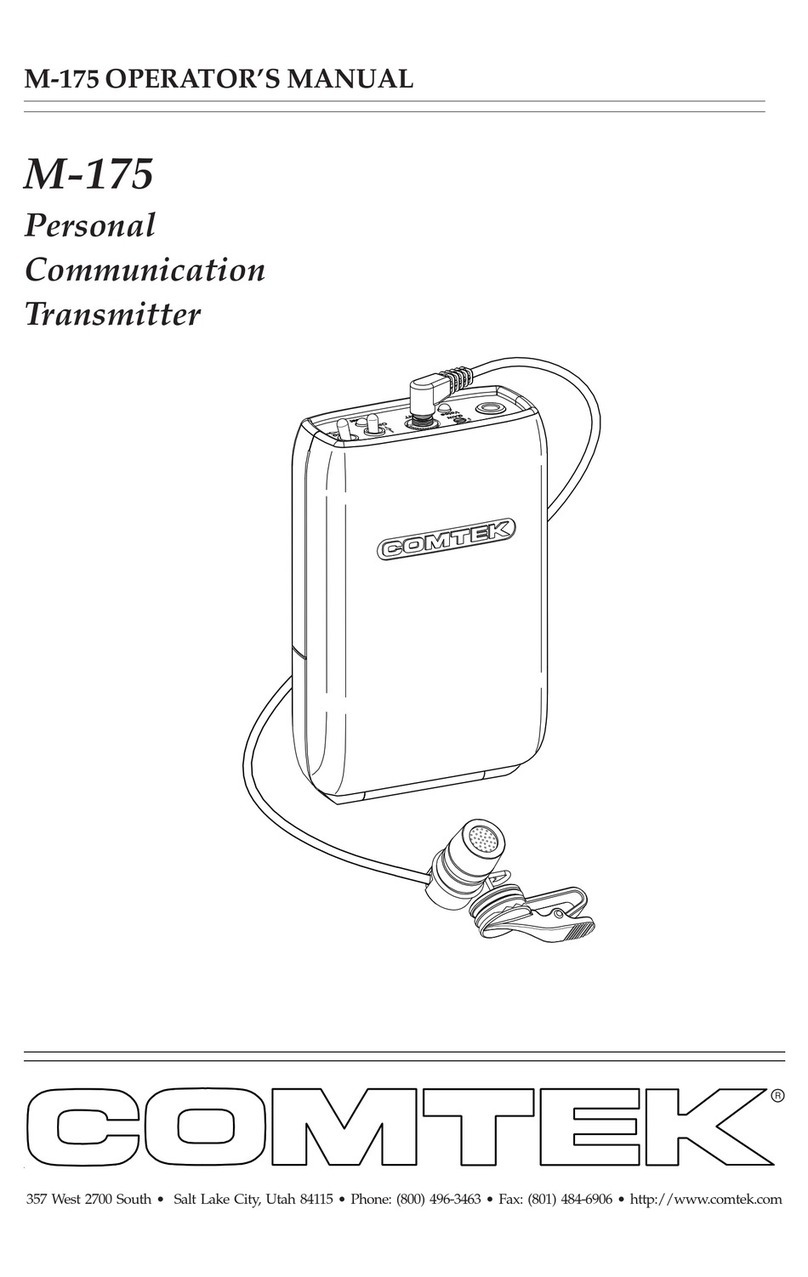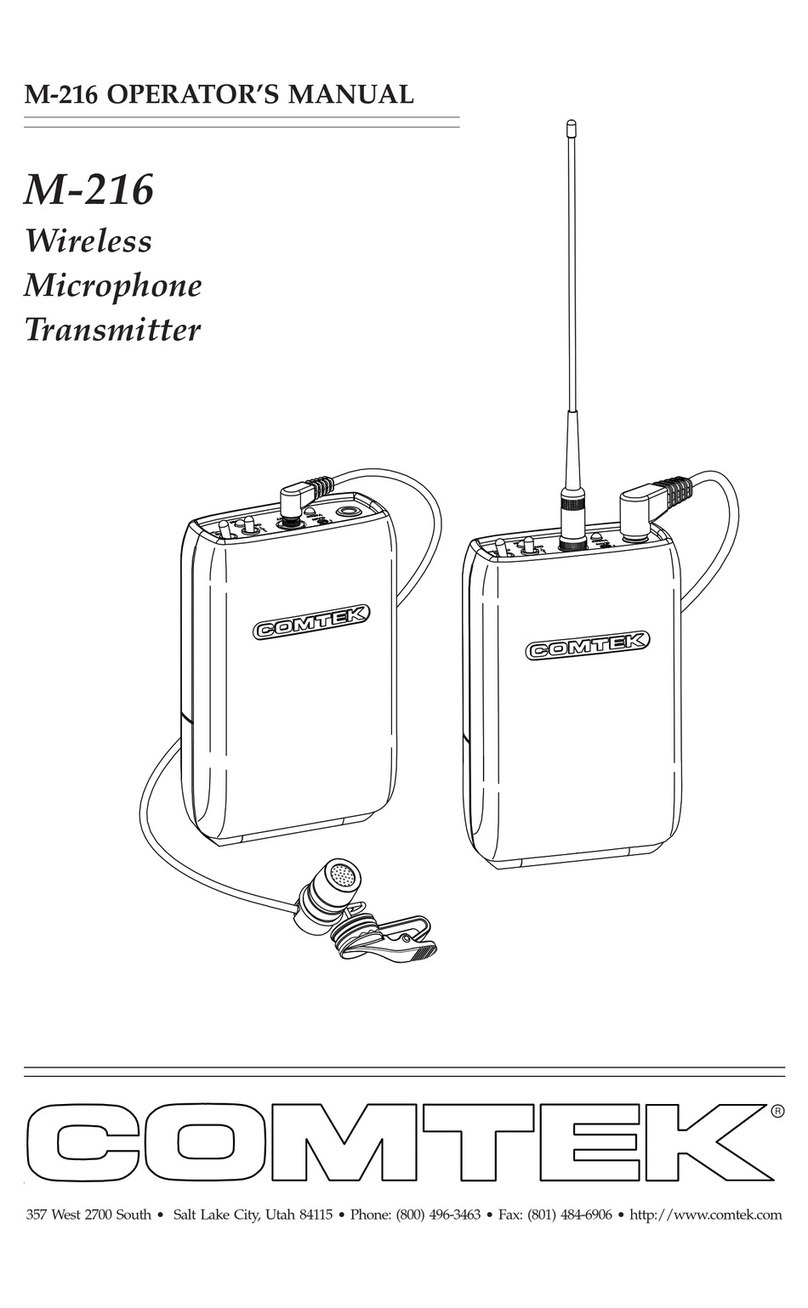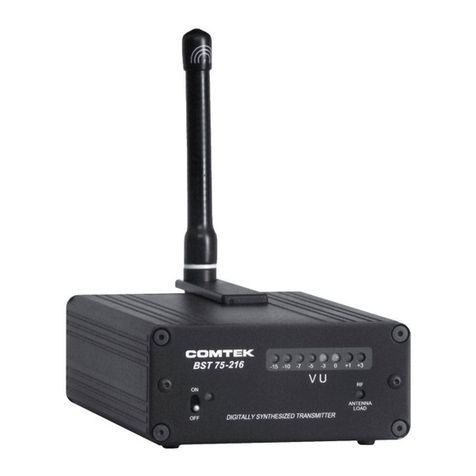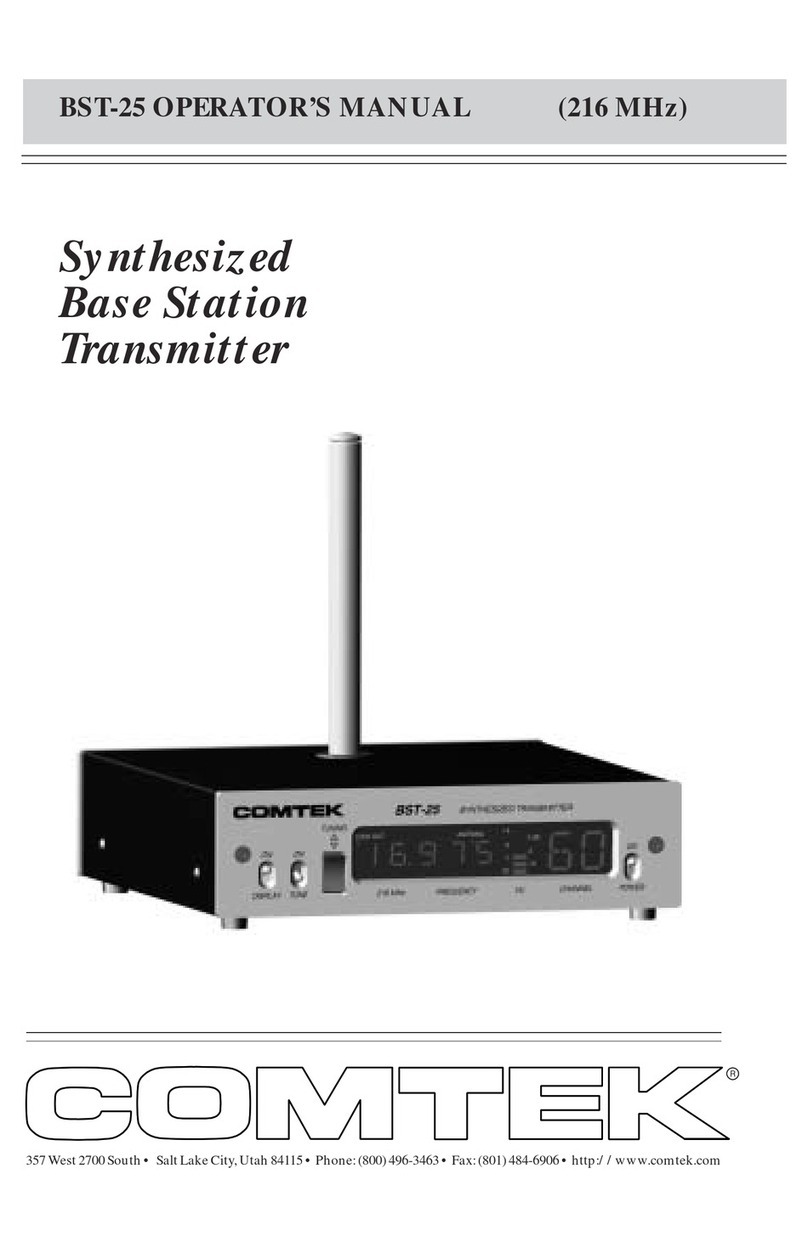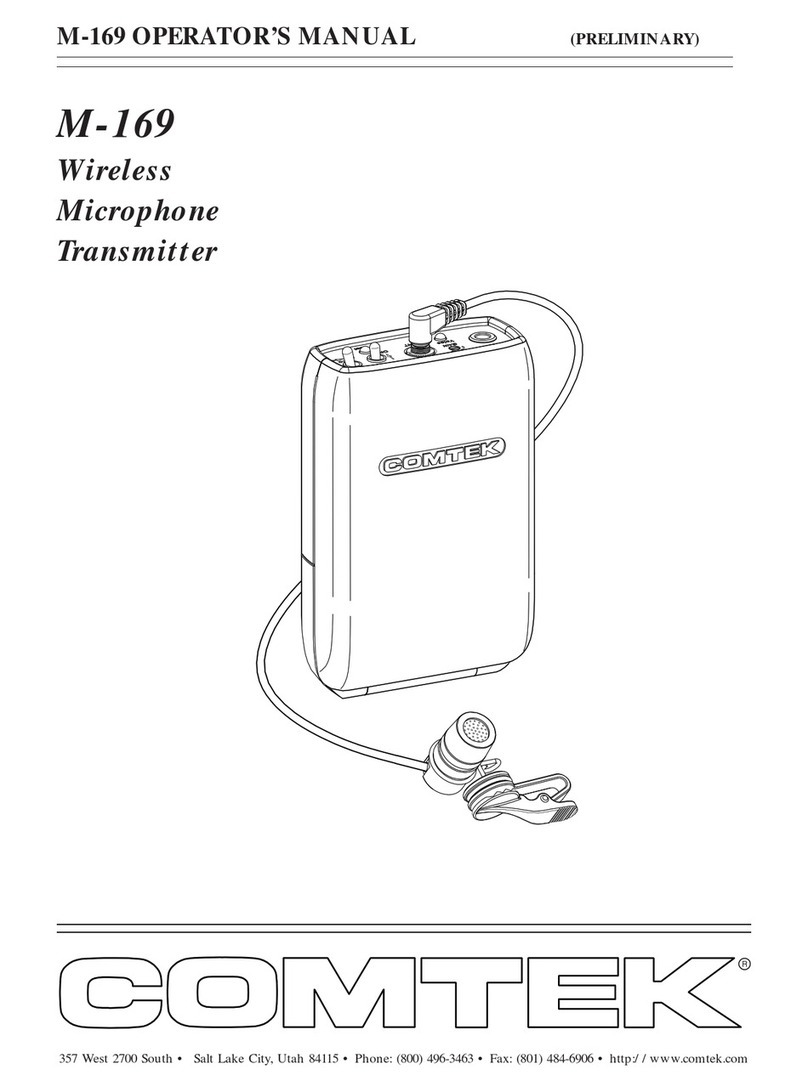Page 6
Multiple Channel Operation
Simultaneous operation with more than two channels requires
coordination of the frequencies that are used to avoid interference.
This interference would result in poor or unusable performance.
When multiple transmitters are broadcasting, the RF signals will
“mix” together generating additional signals on other frequencies
in the receiver’s mixer. This condition, common to all RF receivers,
is called intermodulation or intermod.
If a mixed frequency product is generated close to a frequency
which you are using, the system on that frequency will experience
interference. Interference produces whistle and whine type
sounds and/or reductions of range. To avoid this type of
interference, you should select frequencies from one of the
standard groups (see frequency group charts on page 11), or
you can use COMTEK’s frequency selection guide software to
determine appropriate frequencies. (Contact COMTEK to obtain
a free copy of the frequency selection software.)
Test Tone
The BST-50b base station transmitter has an internal 400 Hz
source which is transmitted when the “TONE” switch is
enabled. This source is intended to be used to make technical
adjustments and for verification of the system. When using
this transmitter with “Tunable Receivers” use this tone to
assist in the proper tuning of the receivers. Tune the receiver
until it receives the tone and adjust the tuning until the tone is
as pure and distortion free as possible. Other possible uses
include; testing receivers, comparing receivers from different
manufactures, range testing the system, or other tests which
would require a modulated carrier. Under normal operation
the “TONE” switch should be disabled.
OPERATING INSTRUCTIONS (continued)






